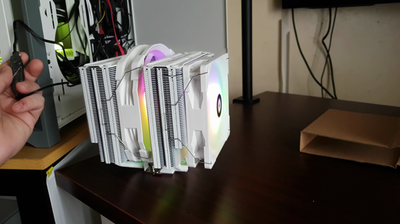Calculating Gambling Odds in Python (2024)
Introduction
Introduction to Gambling Odds and Python
Gambling odds are a pivotal aspect of betting, whether you're eyeing the bright lights of Vegas or a humble local bookie. These odds determine the likelihood of an event happening and establish the potential win on a stake. Understanding them is crucial, as they serve as a cornerstone for making informed bets. Some people have become very famous mastering them, the MIT blackjack team for instance. The BBC has a great report on these at https://www.bbc.com/news/magazine-27519748.
Now, pair these odds with Python, a powerful programming language favored for its simplicity and readability, and you have a formidable tool in your gambling arsenal. I find that Python's versatility allows both seasoned programmers and beginners to navigate the world of gambling odds with ease.
Let's kick off by discussing the bedrock of gambling odds, probability. Probability is expressed as a number between 0 and 1, where 0 means impossibility, and 1 guarantees certainty. In the gambling universe, these probabilities correspond to odds which can be displayed in various formats. However, for our pythonic journey, we'll stick to the decimal format, which is straightforward and universally used in the programming world.
Here's a little code snippet to help us convert probabilities into odds:
def calculate_decimal_odds(probability):
return round(1 / probability, 2)
win_probability = 0.25 # Let's say there's a 25% chance of winning.
odds = calculate_decimal_odds(win_probability)
print(f"The decimal odds are: {odds}")
Now, if you're eyeing this output and scratching your head, don't fret. The console will print "The decimal odds are: 4.0" because when there's a 25% chance, the odds will be one over that probability—simple arithmetic, right?
Let’s move a step further. In the hypothesis of a coin toss - it can either land heads or tails, each outcome having an equal chance. If you were to calculate the odds of getting heads using Python, here’s what you’d type:
def coin_toss_odds():
probability_heads = 0.5
return calculate_decimal_odds(probability_heads)
print(f"The odds of the coin toss resulting in heads are: {coin_toss_odds()}")
The function coin_toss_odds utilizes calculate_decimal_odds we discussed earlier. The outcome here is predictable - decimal odds of 2.0, representing the 50% chance (1 in 2), which is what you would expect from a fair coin toss.
Gambling odds come into their element with complexity. Let’s say you're tracking a horse race with multiple outcomes. Calculating the probability and thus the odds of each horse winning gets intricate. The same holds when calculating odds for jackpots in online casinos - a great explanation for it is given here. As an illustration, let's code a simple function to input a horse's chance of winning and then determine the odds.
def horse_race_odds(chance_win):
assert 0 chance_win 1, "Chance must be a probability between 0 and 1!"
return calculate_decimal_odds(chance_win)
# Example for a <a href="/routers-number-of-ports/10">horse with a 10</a>% chance of winning.
print(f"The odds of this horse to win are: {horse_race_odds(0.1)}")
The assert statement ensures the input is a valid probability. The function spits out the odds of 10.0 in this hypothetical case since there's a 10% chance of victory.
Remember, having a handle on how to calculate odds using Python puts the power in your hands to analyze bets and potentially spot value overlooked by others.
Armed with these basics, you're now primed to traverse the broader landscape of gambling odds and Python. Further down the road, we'll tackle more intricate types of betting odds, crunch numbers in Python to calculate those odds, reel through real-world applications, and explore the ethical implications that come tethered with gambling analytics. But for now, I hope this introduction has lit a clear path for your foray into the fascinating merger of odds and programming.
Understanding Different Types of Betting Odds
Understanding Different Types of Betting Odds
I remember the first time I encountered different betting odds formats. It was quite confusing, taking me a bit of time to wrap my head around the numbers. There's a good chance that, like me, you've come across the three most common types: American, Decimal, and Fractional odds. So let's break them down one by one with some code examples.
American Odds
Also known as moneyline odds, American odds can be either positive or negative. Positive odds indicate how much profit you'd make on a $100 stake, while negative odds tell you how much you need to stake to make a $100 profit.
def american_to_decimal(american_odds):
if american_odds 0:
return 1 + american_odds / 100
else:
return 1 - 100 / american_odds
# Example Conversion
moneyline_odds = 150 # Positive moneyline odds
decimal_odds = american_to_decimal(moneyline_odds)
print("Decimal Odds: {:.2f}".format(decimal_odds))
For negative American odds, the formula changes slightly due to the inversion of the relationship between stake and winnings.
Decimal Odds
Decimal odds are straightforward and are widely used in Europe and Canada. The number represents the total return for every dollar wagered, including the stake.
def decimal_to_fractional(decimal_odds):
# Convert to a fraction
fractional_odds = (decimal_odds - 1).as_integer_ratio()
return "{}/{}".format(*fractional_odds)
# Example Conversion
decimal_odds = 2.50
fractional_odds = decimal_to_fractional(decimal_odds)
print("Fractional Odds: {}".format(fractional_odds))
With decimal odds, calculating the profit is as simple as subtracting one from the odds and then multiplying by the stake.
Fractional Odds
The favorite among UK bookmakers and bettors, fractional odds tell you the profit relative to your stake. The numerator (first number) represents the profit you'd make from a stake equal to the denominator (second number).
def fractional_to_american(fractional_odds):
numerator, denominator = map(int, fractional_odds.split('/'))
if numerator denominator:
# Equivalent positive moneyline odds
return numerator / denominator * 100
else:
# Equivalent negative moneyline odds
return -denominator / numerator * 100
# Example Conversion
fractional_odds = "5/2"
american_odds = fractional_to_american(fractional_odds)
print("American Odds: {}".format(int(american_odds)))
For fractional odds showing a profit less than the stake, the corresponding American odds will be negative. For a profit greater than the stake, it'll be positive.
While converting these odds formats manually can get tedious, with Python, the process becomes almost trivial. It also reduces the risk of calculation errors, which can be costly in betting. When working with gambling data and odds calculation, being familiar with these formats is invaluable as it allows for better data analysis and decision-making. The key takeaway here: converting odds formats ensures you can compare betting opportunities across different bookmakers efficiently. So always double-check your conversion logic because, in gambling, precision is everything.
Remember, this is a basic starting point to understand the types of betting odds. Later on, when calculating odds, you'll often be dealing with more complex scenarios, including probability distributions, event outcomes, and more. Try the code snippets I've provided; they're intuitive and beginner-friendly. Even if you're not into gambling, understanding betting odds enriches your general knowledge of how odds and probabilities function in various aspects of life.
Setting Up the Python Environment for Odds Calculation
Before we get our hands dirty with the intricacies of calculating gambling odds in Python, having a proper environment set up is crucial. To avoid hitting run-time issues down the road, I'll walk you through setting up a robust Python environment tailored for odds calculation. This, in my experience, is a step often overlooked, but it's the bedrock of dependable Python programming.
First off, make sure you have Python installed – as of my writing, Python 3.10 or higher is the way to go. You can download it from the official website if it's not already on your machine. After installation, I always recommend using a virtual environment for Python projects. It's like having a personal playground where you can mess around without affecting the rest of your system. Here's how you create one:
python3 -m venv gambling-odds-env
Once created, activate it:
source gambling-odds-env/bin/activate # On Unix or MacOS
gambling-odds-env\Scripts\activate.bat # On Windows
With the virtual environment squared away, it's package installation time. pip is your tool here. NumPy is going to be your bread and butter for numerical calculations. Pandas come in handy for handling data like a pro. And to top it off, you'll want Jupyter Notebooks for an interactive coding session, which is especially beneficial for beginners:
pip install numpy pandas jupyter
To get into the swing of coding, launch Jupyter Notebook with:
jupyter notebook
You're now all set up with the essentials. But let's take it a notch higher and add SciPy, a package that extends NumPy's capabilities and adds a suite of odds calculation tools:
pip install scipy
Now, let's write a snippet that verifies all our tools are in place and operational. In your Jupyter Notebook, give this a whirl:
import numpy as np
import pandas as pd
from scipy import stats
# Check NumPy version
print(f'NumPy version: {np.__version__}')
# Check Pandas version
print(f'Pandas version: {pd.__version__}')
# Quick stats calculation to confirm SciPy is working
prob = stats.norm.cdf(0.5)
print(f'Probability calculated using SciPy: {prob:.4f}')
This piece of code checks the versions of NumPy and Pandas you're running and performs a simple cumulative distribution function calculation using SciPy for a quick odds-related test. If all goes well, you should see printed versions and a probability value without errors.
Remember, managing library versions is not a trivial task, as dependencies can make or break your project. I've faced enough "But it worked on my machine!" moments to know that documenting which versions I use is non-negotiable.
As a pro tip, keep a requirements.txt file at hand. This file lists all packages and their respective versions used in your environment. To create it, run:
pip freeze requirements.txt
And to install from it:
pip install -r requirements.txt
This is your safety net, ensuring that if you share your work or return to it later, the odds (pun intended) of running into environment-related issues dwindle to almost zilch.
That's all there is to the initial setup. You now stand on solid ground, equipped for crunching numbers and making sense of gambling odds in Python. Next, you'll learn to interpret different types of professional betting odds and transform them into actionable insights using the instruments you've just tuned up.
Implementing Odds Calculations in Python
Implementing odds calculations in Python can be an enlightening endeavor for anyone interested in the intersection of programming and probability. I've personally found that working through the logic and code required to calculate betting odds significantly deepens my understanding of both fields.
Let's start with a simple example: flipping a coin. The probability of getting either heads or tails is 50%, but how would we translate this understanding into Python code? Here's a basic outline:
import random
# Function to simulate a coin flip
def flip_coin():
return 'Heads' if random.randint(0, 1) == 0 else 'Tails'
# Test the function
flips = [flip_coin() for _ in range(10)]
print(flips) # Output example: ['Heads', 'Heads', 'Tails', 'Heads', ...]
Now imagine we want to calculate the odds of getting a specific outcome in a series of events, like rolling a six on a dice. In betting terms, the odds would be the ratio of events that produce the specific outcome to those that do not.
def calculate_odds(successful_events, total_events):
if successful_events == 0 or total_events == 0:
return "No odds can be calculated."
odds_success = successful_events / (total_events - successful_events)
return f"The odds are {odds_success}:1."
# Example usage
odds_of_six = calculate_odds(1, 6)
print(odds_of_six) # Output: The odds are 0.2:1.
The practical application of these odds in gambling scenarios involves more complex scenarios, like a poker hand. Calculating the odds of getting a royal flush requires understanding both the rules of the game and applying combinatorics.
import math
# Function to calculate the probability of a royal flush
# (ace, king, queen, jack, and ten of the same suit)
def royal_flush_probability():
# There are four suits in which a royal flush is possible
successful_events = 4
# Total number of possible 5-card hands from a 52-card deck can be calculated using combinations:
# Mathematically: C(n, k) = n! / (k! * (n - k)!)
total_events = math.comb(52, 5)
odds = (successful_events / total_events) * 100
return f"The probability of a royal flush is {odds:.6f}%."
print(royal_flush_probability()) # Output: The probability of a royal flush is 0.000154%.
When working through these types of calculations, I always like to validate my results. It's incredibly easy to make a mistake in the logic or the math, especially when working with combinations and probabilities. So, it's essential to cross-reference your results with established odds, test your code thoroughly, and possibly use simulation to approximate the results where analytical solutions are not possible or are too complex.
Remember that calculated odds are only a model of reality and not a prediction. While they give us a way to assess the likelihood of certain outcomes, the actual event will still be influenced by chance. As you continue to explore more complicated scenarios, such as odds in horse racing, sports betting, or even complex financial instruments, you'll appreciate Python's utility in handling the computations and data analysis needed to make informed estimations.
I hope this gives you some indication of how to start implementing odds calculations in Python. The key takeaway is to break down the process into understandable chunks, continually test your assumptions, and validate your results. Happy coding!
Real-World Applications and Ethical Considerations
Python's prowess extends beyond mere calculations; it enables the automation and simulation of various real-world scenarios. Let's explore how the skills you've gained in calculating gambling odds could be applied to some practical use cases.
One intriguing application could be in the creation of a sports betting simulation. Imagine constructing a Python program that utilizes historical data to model potential outcomes. By harnessing pandas and numpy, you could manipulate datasets to backtest betting strategies, like this:
import pandas as pd
import numpy as np
# Load historical sports data
data = pd.read_csv('historical_sports_data.csv')
# Calculate win probabilities based on historical performance
win_probabilities = data.apply(lambda row: calculate_win_probability(row), axis=1)
# Define a simple betting strategy
def betting_strategy(probability, odds):
if probability * odds 1:
return 'bet'
return 'no bet'
# Test the strategy against historical odds
bets = np.vectorize(betting_strategy)(win_probabilities, data['odds'])
# Analyze the performance of the strategy
performance = assess_strategy(bets, data['outcomes'])
Ethically, it's essential to remember that gambling can have serious social consequences, especially for those with gambling addiction. While programming these simulations can be intellectually stimulating, I always keep in mind the human element and promote responsible gambling. Organizations like GambleAware (https://www.begambleaware.org/) offer resources to help with gambling addiction, which is important to acknowledge when discussing gambling-related topics.
Another practical application is in financial markets, where similar odds calculations are used for risk assessment and investment decision-making. Consider writing Python code to evaluate the risk of stock portfolios:
# Simulate stock returns using Monte Carlo method
def monte_carlo_simulation(stock_data, iterations):
results = np.zeros(iterations)
for i in range(iterations):
random_returns = np.random.choice(stock_data['returns'], len(stock_data))
results[i] = np.product(1 + random_returns)
return results
# Run the simulation
simulation_results = monte_carlo_simulation(stock_data, 10000)
# Calculate the Value at Risk (VaR) at a 95% confidence interval
VaR_95 = np.percentile(simulation_results, 5)
Here, we confront the ethical implications of robo-advisors and AI in financial decision-making. As programmers, we must build transparency and safeguards into our systems to prevent unfair manipulation of markets or misconduct.
While these examples are simplistic, they're a starting point for beginners before tackling more complex problems. Always test your algorithms with small, controlled simulations before considering real-world deployment.
Lastly, let's address the dual-use nature of knowledge. The Python skills you've learned for odds calculation can be adapted for various fields, from finance to AI. However, with this power comes responsibility. I'm a proponent of ethical programming – using skills to positively impact society and individuals. It's incumbent upon us, the programmers, to consider the social implications of the code we write and act accordingly.
In conclusion, the journey through Python and gambling odds is more than a mathematical exercise. It's a gateway to understanding broader applications and grappling with the ethical dimensions of our craft. Whether you delve deeper into data science, fintech, or another realm entirely, continue learning and coding with both skill and conscience.
Share


